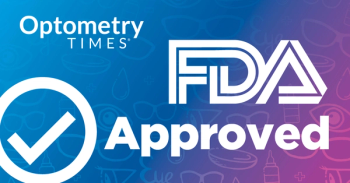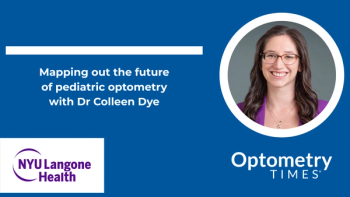
AOA 2025: Innovation Hub sparks thoughtful conversations about AI, technology in eye care
The Innovation Hub was split into 3 panel discussions on assessing future health through AI-enabled tools, addressing patient workflow challenges through AI, and enhancing treatment through new technologies.
In its debut year, the AOA Innovation Hub encouraged conversation between clinicians, tech titans, startups, and industry reps about the road ahead for technology and artificial intelligence (AI) in eye care. Moderated by Scot Morris, OD, the Innovation Hub was split into 3 panel discussions on assessing future health through AI-enabled tools, addressing patient workflow challenges through AI, and enhancing treatment through new technologies.
"This isn't just another summit—it's a call to action to challenge your perspectives, engage with these industry titans and be at the forefront of the evolution of eye care," said Scot Morris, OD, session moderator.
Assessing future health through AI-enabled tools
Panelists Laure Pichereau, CEO of SiView; Patrick Sauvageau, OD, MSc, CEO of Zilia; and Catherine Bornbaum, PhD, MBA, president of RetiSpec, joined moderator Scot Morris in discussing the broad challenges of integrating AI into practice. One of the biggest challenges cited was overcoming resistance to change, but panelists agreed that AI could be a powerful tool to delegate and streamline routine tasks, which would give practitioners more time to dedicate to complex patient needs and enhanced care quality.
In addition to streamlining routine tasks, the experts discussed the eye’s position as the “window to health,” which creates an opportunity to leverage quantifiable ocular biomarkers to discover problems elsewhere in the body. AI has the potential to make this particularly powerful. However, the panelists agreed that seamless integration into existing workflows was the key to adoption to minimize disruption to the staff and the patient. Other factors in successful adoption were discussed, with the panelists especially interested in models that leverage established reimbursement pathways, such as CPT codes, and a tangible return on investment. Collaboration between eye care providers and technology developers would be key in creating a model that meets the needs of most optometric practices.
In terms of future outlook, Morris made the key point of how difficult it is to secure substantial funding for research and development of AI models, particularly if they require clinical studies to validate. Interestingly, the panelists discussed how AI should be included in academic curricula to prepare the next generation of optometrists appropriately; they agreed that education on AI would help the industry move forward and march toward becoming the primary “gatekeepers of health.” They did not discuss the need to continuing education in AI.
Addressing patient workflow challenges through AI
The next panel, also moderated by Morris, analyzed the impact of natural language processing (NLP) and AI on eye care workflows. Panelists Grant Shmid, VP of business development at Altris AI; Colton Calandrella, cofounder and CEO of Barti; and Easy Anyama, OD, an AOA volunteer, chatted about their experience with AI scribes and electronic health records (EHR).
The discussion underscored the value of AI in these cases; at one point, it was stated that using an AI scribe was “10 times better” than using a traditional EHR due to time savings. Together, the panelists envisioned a future in which AI would become so engrained in workflows that it is functionally invisible, which would ultimately make doctors irreplaceable because they are now free to provide high-value patient interactions. As stated before, optometry and eye care in general have the power to detect pathology early using biomarkers in the eye, making the industry well-positioned to lead the charge in AI adoption in practice.
Enhancing treatment through new technologies
The final session pivoted away from AI a bit but honed in on new and exciting technology. This session, moderated by Nora Lee Cothran, OD, featured panelists Mile Brujic, OD, for MediPrint Ophthalmics; Ben Bergo, president chief business officer of Tenpoint Therapeutics; and Elan Weiner, founder and CEO of ECI Therapeutics.
Each panelist discussed the technology under investigation by the company they were representing. Brujic spoke about the bimataprost-eluting contact lens for the treatment of glaucoma from Mediprint; Bergo described Tenpoint’s proprietary brimochol, a combination of brimodine and carbachol for presbyopia; and Weiner discussed ECI’s platelet-rich, plasma-derived growth factor eye drops. Underscoring each of these participants was a desire to improve patient outcomes through innovative means—which is hopefully always the goal as optometrists invite technology and AI into their workflows.
Newsletter
Want more insights like this? Subscribe to Optometry Times and get clinical pearls and practice tips delivered straight to your inbox.



















































.png)


